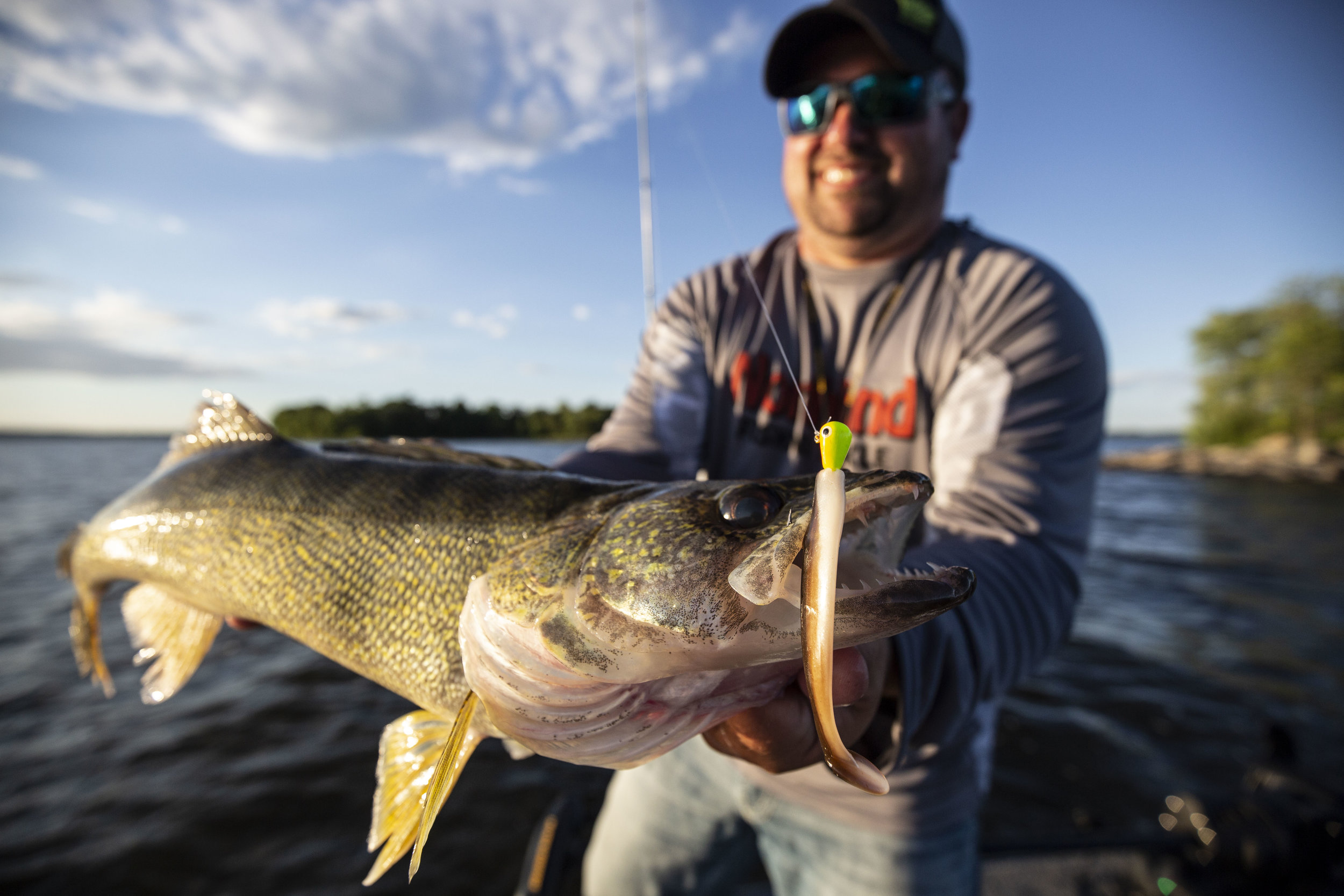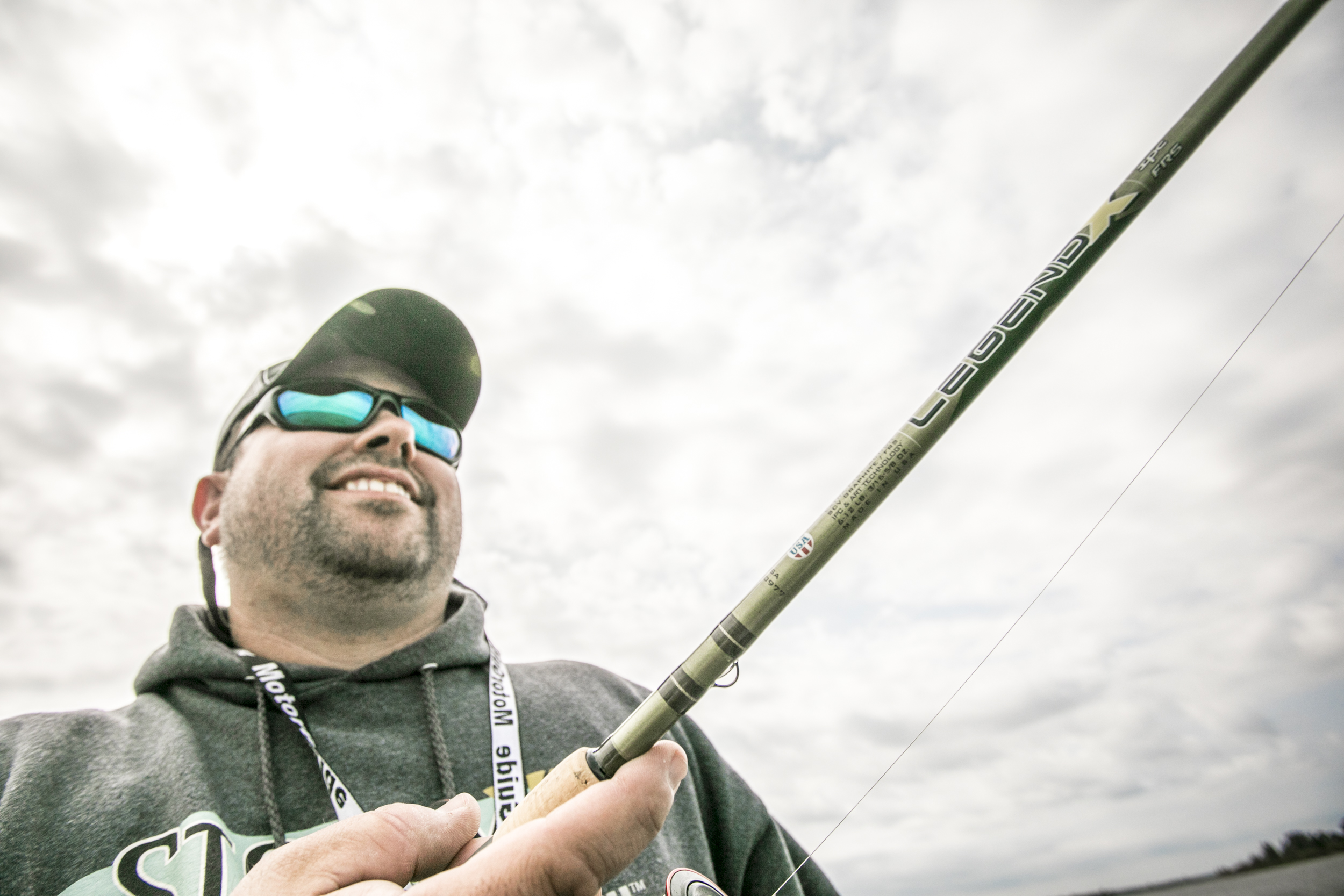Water temperatures have started to level off towards their summertime highs throughout most of the Midwest, and if you haven’t already been hucking plastics, now would be a great time to start. Usually, I’m looking for 60-65 degrees in most of the lakes I’m fishing to signal the pairing of jigs especially with more plastics than live bait. This goes for crappies, walleyes, and smallmouth alike.
That doesn’t mean I’m a plastics-only purist. We had the water temps on Lake of the Woods recently to support a good plastics bite, but the deep fish still required us to use the salted shiners that are so prevalent up there. Try as I may, with a number of styles, deep jigs with those mushy minnows drastically outperformed any rubber baits I dropped. Therein also lies the problem for those who’ve never given plastics an honest measure. There’s certainly times were live-bait can outfish plastics, but year after year I’m encountering bites when the reverse is just as true, and the sooner you come to believe it, the better angler you will become.
For most fishing methods stationary, live bait can have a distinct advantage. With live minnows, crawlers, or leeches, you’ve got all kinds of natural materials that fish have been pre-programmed to love. Blood, oil, scales, and perhaps most importantly, the all-important profile, shape, and action. “There ain’t nothin’ like the real thing, baby,” I think is how it goes.
All of which flies out the window when fish are active, aggressive, and particularly shallow looking for food. Perhaps that’s why bass plastics have been widely accepted and used for decades. Those bass anglers who incidentally catch ‘eyes, pike, and even panfish, can tell you that active fish often don’t discriminate. Wacky rigged or dropshot walleyes anyone?
Live bait’s effectiveness also falls off when you’re dragging around baits at any speed. Pulling spinners and crawler harnesses around is great for all kinds of species, especially the ones you’re not targeting. Some days on the river especially, you can catch up to a dozen other species on crawlers before ever catching a walleye. That’s when artificial copies of the real thing can offer a great advantage. Plastic crawler or leech imitations abound, and most of them will have a much more pronounced movement in the water.
The action of the bait then, especially when retrieved or trolled, can have a significant impact on the bite. Paddletails, split tails, curly tails, ringworms, and other various plastic styles each have their own distinctive movements in the water, offering far more attraction than the live bait that so often ends up dead on a hook. These tantalizing motions offered by all of the plastics designs these days offer anglers a multitude of means to attract a fish, especially in clear water when visual cues can be the strongest ones fish respond to.
Of course, the allure of plastics goes far beyond the visual in terms of a fish’s interest level. While it’s true that the color combinations and ability to match the hatch, or completely defy it, is very simple with today’s plastics, so often we forget about the subtle vibrations that plastic can emit. A 5” curly tail grub emits a pretty good thump as that tail wags side to side, and especially during late fall frog bites, there’s plenty of river walleyes that have used their lateral line to find those “loud” plastics. Of course, paddletail or boottail varieties come to mind as a great emitter of vibration and “feel” to the plastics game as well.
They’re colorful, offer some bait-like sensations in the water, and even trigger some strikes due to their unique movements. All of which sounds like a list of attributes you’d like for any bait ever, regardless of species you’re targeting. The last variable that I think is the most important however, is the fact that plastics fish fast and cover water. More fish per bait means less dipping into the crawler box, leech bag, or minnow bucket. Which in turn leads to more casts. It also leads to the ability to progressively dial up the level of the trolling motor and cover more water. Especially during this time of the year, any lake, river, or streams biological production is running at high gear, and fish need to eat. They’re aggressive, and often willing to chase, so you’ll simply run into more of these kinds of fish by putting more casts in front of them.
Live bait will always have its place and time in my mind, especially early and late in the year. There’s also times and species that require it during tough bites or poor weather conditions. That said, for your average summer day out on the lake, if you’ve been reticent as a walleye or panfish angler to focus heavily on plastics, let this be the last year you miss out.
Photo Credit - Matt Addington Photography





